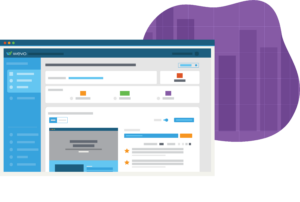Contents
- 1 Understanding Rapid Research:
- 2 Qualitative Evaluation Methods:
- 3 When to Opt for Rapid Research:
- 4 Rapid research proves beneficial when:
- 5 Building a Scalable Rapid Research Framework:
- 6 Steps to Build a Rapid Framework:
- 7 Timing is Key:
- 8 Creating a Rapid Research Timeline:
- 9 Rapid Qualitative Analysis:
- 10 AI for Rapid Qualitative Analysis:
- 11 Staying Agile with Continuous Improvement:
- 12 Tips for Faster, Continuous UX Research:
- 13 Run Rapid Research with WEVO:
Understanding Rapid Research:
Rapid research, a flexible framework designed for swift execution, proves invaluable when faced with challenging constraints such as strict deadlines. It serves as a dynamic tool for accumulating quick feedback, allowing teams to execute designs more rapidly than traditional user research methods. However, the term “rapid” doesn’t imply hasty or careless execution. Instead, it signifies a structured program that demands speed and limits the types of research methodologies employed. This framework streamlines various aspects of research, such as project planning and qualitative data evaluation, facilitating faster decision-making.Qualitative Evaluation Methods:
Rapid research encompasses several qualitative evaluation methods, including real-time evaluations (RTE), rapid feedback evaluations (RFE), rapid evaluation methods (REM), and rapid-cycle evaluations (RCE). These methods contribute to the framework’s agility, enabling teams to swiftly gather actionable insights. Moreover, rapid research is iterative, emphasizing continuous improvement to streamline each step of the research process. It operates in a “less ad-hoc way” by establishing criteria or goals, providing structure for tactical research, emphasizing fast execution and analysis, and serving as a standalone resource for multiple teams.When to Opt for Rapid Research:
While the allure of “fast research” is compelling, it’s crucial to recognize that rapid research isn’t a one-size-fits-all solution. Certain projects, such as longitudinal diary studies or extensive surveys, may demand more time and effort. Understanding when to employ rapid research is essential to ensure faster insights without compromising validity.Rapid research proves beneficial when:
- Gathering Focused Insights: Quick answers that measurably impact or unblock a project.
- Providing Direction: Preliminary, bite-sized research for directional cues or to narrow down options.
- Supporting Other Research: Complementing foundational and generative research or addressing a backlog.
- Informing Agile Processes: Validating a product launch or update before shipping or launching.
Building a Scalable Rapid Research Framework:
For expanding research teams, scalability is paramount in meeting the demand for high-quality insights. Establishing a set program for rapid research helps teams consistently derive value from quick research insights. Building such a framework involves an iterative process tailored to specific research needs.Steps to Build a Rapid Framework:
- Assess Your Team:
- Evaluate your team’s speed in executing findings.
- Determine how many teams or groups will benefit.
- Examine your backlog of research questions.
- Get Support:
- Identify key stakeholders and potential challenges.
- Understand potential resistance to rapid research.
- Assess available resources dedicated to rapid research.
- Socialize:
- Generate enthusiasm for rapid research.
- Impact the UX culture positively.
- Identify key individuals to share findings with.
- Establish a Process:
- Plan a 10-15 day cycle for planning, reviewing, executing, and sharing research insights.
- Identify the best model and cadence for your team.
- Build a team with roles like a notetaker, designer, study moderator, and someone from the Product team.
- Document Everything:
- Template parts of the process for efficiency.
- Establish access for your team and non-research teams.
- Maintain a research repository for organizational knowledge.
- Experiment and Iterate:
- Analyze what worked well and areas for improvement.
- Solicit feedback from colleagues.
- Track progress and make changes as needed.
Timing is Key:
Rapid research isn’t truly “rapid” unless it consistently speeds up each step of the way. Identifying areas for streamlining within the research process is essential. The timeline for a rapid research project may vary based on factors such as session duration, team commitment, design turnaround time, participant recruitment, scheduling, and research operations.Creating a Rapid Research Timeline:
Initiating a rapid research framework doesn’t require an immediate drastic reduction in the research process. Begin with a longer timeline and iterate based on what works best for your team. An example timeline for a 15-day rapid research project might look like this:- Days 1-2: Plan the Rapid Research Study
- Define research objectives and questions.
- Identify data sources and methods.
- Recruit participants.
- Develop a research plan.
- Days 3-5: Conduct the Rapid Research
- Schedule and conduct interviews.
- Send out online surveys.
- Days 6-8: Analyze the Findings
- Transcribe interviews.
- Use WEVO’s AI for rapid text and sentiment analysis.
- Leverage WEVO’s visualization tools for insights.
- Day 9: Synthesize and Share Insights
- Compile significant findings.
- Prepare a concise summary.
- Create visually appealing reports.
- Days 10-11: Document Findings
- Organize data into a structured format.
- Use a metadata system for easy retrieval.
- Upload findings to a research repository.
- Days 12-15: Review and Finalization
- Review the entire process.
- Seek feedback from colleagues.
- Note findings for future improvements.
Rapid Qualitative Analysis:
Qualitative data analysis, known for its time-consuming nature, can be expedited within the rapid research framework.AI for Rapid Qualitative Analysis:
- According to the 2023 State of User Research Report, 1/5 researchers are currently using AI in their research and an additional 38% plan to incorporate it in the future.
- Automate Data Extraction and Transcription:
- Utilize WEVO’s AI for relevant information extraction.
- Automate Text Analysis and Sentiment Mining:
- WEVO helps you identify key themes, sentiments, and relationships within your qualitative data.
Staying Agile with Continuous Improvement:
To transform research insights into actionable decisions swiftly and efficiently, user research teams need to shift focus from irregular research efforts to continuous discovery research. Rapid research frameworks assist agile teams in building continuous research with quicker turnaround times, efficient processes, and enhanced cross-functional collaboration.Tips for Faster, Continuous UX Research:
- Incorporate Action Items into Product Sprints:
- Prevent UX debt by integrating action items from the UX backlog.
- Conduct Research and Design Outside of Current Sprints:
- Prioritize proactive and preemptive research and design work.
- Involve Cross-Functional Team Members:
- Maintain regular communication to ensure cross-functional alignment.
- Consistent Team Roles:
- Avoid shuffling team roles to maintain expectations and knowledge sharing.
- Monitor Progress and Adjust Strategies:
- Iterate on the rapid research program based on feedback and progress.



